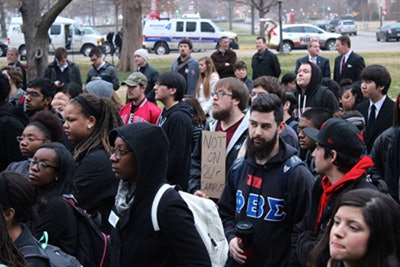The shock of the presidential election results is still sinking in across America, for both Trump supporters and anti-Trump voters. The thing that seemed outlandish and completely impossible just a year ago has now become the reality for Americans. The truth remains, however, that come January 20 the nation’s highest office will be helmed by Republican Donald Trump.

Here’s how to keep college and university campuses moving forward for diversity in a Trump-led America:
Discuss issues
Trump’s platform rose to popularity on issues like illegal immigration, tax-funded health insurance, and abortion rights. Facilitate conversations at the college-wide level about these issues, looking at the best outcomes for a more diverse America while truly examining the opposing views. This can take place in classrooms but should also happen at a college-wide level at forums or other university-hosted events. Don’t just dismiss xenophobia or White privilege as “bad” — talk about why people put their faith in those things and how to turn the tide from fear to understanding. Allow students to learn from each other in an organic way that doesn’t hand down a black-or-white decree on the issues. Colleges must lead the discussions on these issues so the next generation of educated graduates has a broader world view and deeper awareness.
Prepare for less student aid
Under the Obama administration, plans for two years of free community college for all students who maintained the right course load and grade-point average were under way. It’s reasonable to assume that Hillary Clinton would have furthered that plan and also reasonable to assume that Trump will not. Things like Pell grants and federally-funded aid are likely to tank or, at the very least, remain stagnant. Colleges and universities that want to keep increasing the diversity on their campuses must put actionable plans in place to make that happen. This includes more private scholarships, along with more reasonable costs for students and spending plans for attendance. Early high school recruiting will become more important than ever so colleges and universities can target a diverse population and get those students prepped for college costs and financial aid programs.















